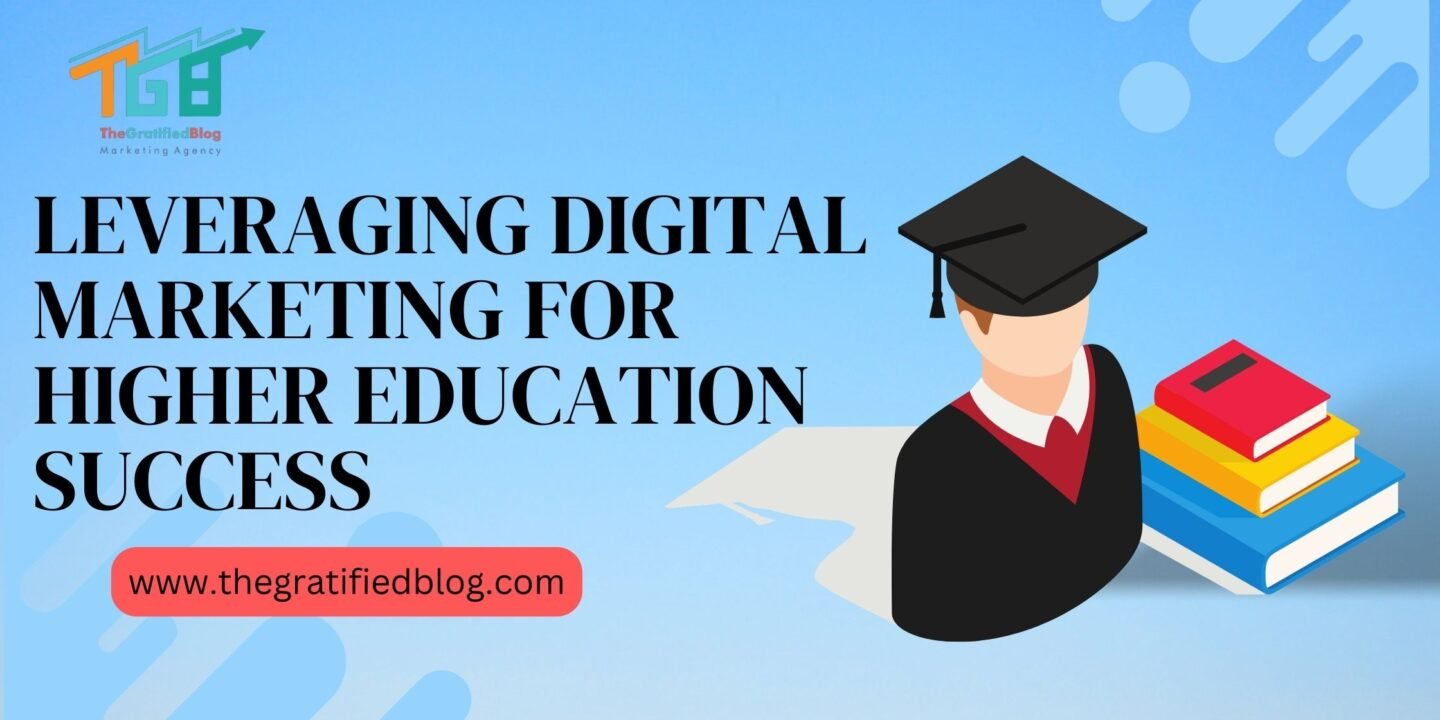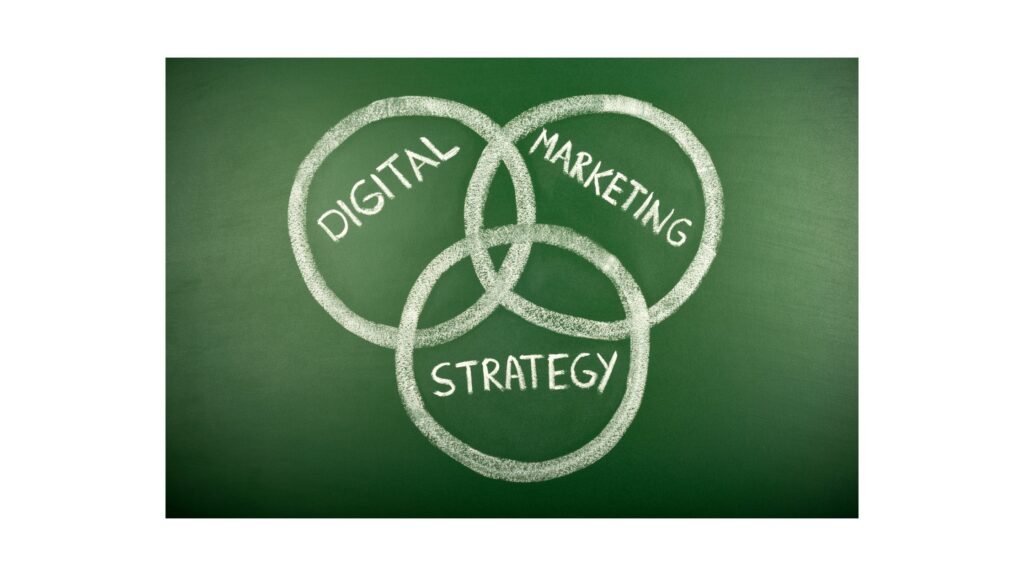
In the contemporary digital era, higher education institutions encounter increasing student competition. Conventional recruitment approaches must be revised to draw in prospective students’ diverse and tech-savvy demographic. To thrive in this highly competitive landscape, colleges and universities must embrace digital marketing as a vital tool for reaching and engaging with their target audience. In this blog post, we will explore the benefits of digital marketing for higher education and provide valuable strategies to help institutions excel in this space.
What Is Digital Marketing For Higher Education?
Digital marketing for higher education uses online marketing strategies, techniques, and channels to promote colleges, universities, and educational institutions. This specialized form of digital marketing is designed to attract, engage, and convert prospective students and maintain communication with current students, alums, faculty, and other stakeholders within the higher education community.
The primary goal of digital marketing for higher education is to increase an institution’s visibility, engage with prospective students, and drive applications and enrollments. It’s also about building a robust online community, fostering relationships with students and alums, and effectively communicating the institution’s values and offerings in the digital landscape. In an increasingly competitive higher education environment, digital marketing is a vital tool for institutions to differentiate themselves and succeed in attracting and retaining students.
7 Proven Digital Marketing Strategies For Higher Education

Digital marketing strategies for higher education refer to the various approaches and techniques colleges and universities use to promote their institutions, programs, and services online. These strategies are crafted to connect with and captivate prospective students, current students, alumni, and other stakeholders through digital channels. Here’s an explanation of some key digital marketing strategies commonly employed by higher education institutions:
- Search Engine Optimization (SEO): SEO includes enhancing a website’s visibility through optimization in search engine results. By optimizing your website’s content, meta descriptions, and keywords, you can increase the chances of your institution appearing at the top of search results when prospective students search for relevant terms, such as specific programs or campus information.
- Content Marketing: Content marketing focuses on creating and distributing valuable and relevant content to attract and engage your target audience. For higher education, this can include blog posts, articles, videos, webinars, and other content that provides information, addresses concerns, and showcases the unique aspects of your institution.
- Social Media Marketing: Harnessing social media platforms such as Facebook, Instagram, Twitter, and LinkedIn, higher education institutions can connect with their audience, share updates, engage in conversations, and run targeted advertising campaigns. Social media is a potent tool for constructing and maintaining a sense of community among current and prospective students.
- Pay-Per-Click Advertising (PPC): PPC advertising, such as Google Ads, allows institutions to create and run advertisements that display when users search for particular keywords or phrases. You only pay when users click on your ad, making it a cost-effective way to reach prospective students actively searching for information.
- Email Marketing: It encompasses sending focused emails to various audience segments. This can include newsletters, updates, event invitations, and application reminders. Email campaigns help keep prospective students informed and engaged.
- Influencer Marketing: Collaborating with students, alums, or industry influencers with a significant online presence can help authentically promote your institution. These influencers can share their experiences and advocate for your institution, effectively reaching a broader audience.
- Online Reputation Management: It’s crucial to monitor and manage your online reputation by addressing online reviews, comments, and feedback from students and stakeholders. Positive online reviews and responses to concerns can build trust and credibility for your institution.
Benefits Of Digital Marketing For Higher Education

Digital marketing offers numerous benefits for higher education institutions. In today’s digital age, it has become essential for reaching and engaging with prospective students, faculty, and other stakeholders. Here are some of the critical benefits of digital marketing for higher education:
- Increased Reach: Digital marketing allows higher education institutions to reach a worldwide audience, overcoming geographical boundaries. You can target and connect with potential students and faculty members worldwide.
- Cost-Efficient: Digital marketing frequently offers a more budget-friendly alternative to traditional marketing approaches. You can reach a large audience with a smaller budget, making it a budget-friendly option for educational institutions.
- Targeted Advertising: Digital marketing platforms allow you to create highly targeted advertising campaigns. You can focus on a particular. Targeting specific demographics, interests, and behaviors guarantees that your message reaches the intended audience.
- Data and Analytics: Digital marketing provides access to detailed data and analytics. This allows institutions to track the performance of their campaigns, measure ROI, and make data-driven decisions to improve their marketing strategies.
- Personalization: Digital marketing enables personalized communication with prospective students and other stakeholders. You can customize your messages and content to the interests and needs of individual audiences.
- Content Marketing: Higher education institutions can employ content marketing to demonstrate their expertise and offer valuable insights to their audience. This can help establish authority and build trust with prospective students and faculty.
- Social Media Interaction: Social media platforms offer a space for institutions to engage with their audience, share updates, answer questions, and create a sense of community.
- Improved SEO: Implementing effective digital marketing strategies can boost your website’s search engine ranking, making it easier for prospective students to find your institution when searching for relevant programs.
- Lead Generation: Utilizing digital marketing can assist in generating leads by capturing the contact information of prospective students interested in your programs, allowing for follow-up and nurturing.
- Online Reputation Management: You can oversee and control your institution’s online reputation through digital marketing. Responding to reviews, addressing concerns, and highlighting positive aspects of your institution can enhance your brand image.
Real-World Examples Of Higher Education Institutions That Have Successfully Implemented Digital Marketing Strategies
Several higher education institutions have successfully implemented digital marketing strategies to enhance visibility, attract students, and engage with their audience. Here are some real-world examples:
University Of Phoenix
The University of Phoenix is renowned for its pioneering use of digital marketing. It has effectively leveraged online advertising, including Google. It utilizes advertisements and social media advertising to connect with its intended audience of adult learners and working professionals seeking flexible and online degree programs. Their digital marketing efforts have contributed to a substantial online student population.
Harvard University
One of the most prestigious institutions globally, Harvard University utilizes a comprehensive digital marketing strategy to engage with a global audience. They actively use social media, including Facebook, Twitter, and Instagram, to promote their courses, share faculty research, and host virtual campus tours. Their strong online presence attracts prospective students and fosters a sense of community.
Stanford Graduate School Of Business
Stanford GSB has effectively harnessed digital marketing to promote its MBA and other programs. They are known for creating high-quality content on their website and social media platforms, conducting webinars, and collaborating with influencers to broaden their reach and engage with prospective students.
FAQs
Q1. What Is The Scope Of Digital Marketing In Education?
The scope of digital marketing in education is vast and continues to increase. It offers opportunities for institutions to reach a global audience, engage with students and stakeholders, and enhance their online presence, making it an essential component of modern education marketing strategies.
Q2. Is Digital Marketing Good For College Students?
Yes, digital marketing can benefit college students by offering opportunities for skill development, internships, part-time jobs, and access to relevant content and resources.
Q3. Can A 12th Pass Do digital Marketing?
Yes, a 12th-pass individual can pursue a career in digital marketing. Digital marketing roles often do not require specific degrees, and many online courses and certifications are available to acquire the necessary skills and knowledge. Starting with entry-level positions and gaining practical experience is a common path for those interested in this field.
Conclusion
Unlocking new opportunities results from embracing digital marketing horizons for higher education institutions. Its power to reach, engage, and build relationships in the digital age is unparalleled. To further this discussion, we invite you to share your thoughts and experiences with digital marketing for higher education.
Have you witnessed any success stories or faced unique challenges? We’d love to hear from you in the comments section below. Join the conversation, and let’s continue exploring the digital frontiers of education together.








No Comments